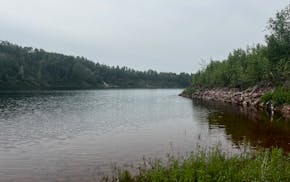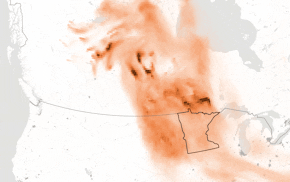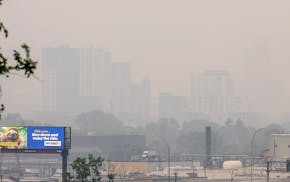Temperatures are dropping and many Wisconsin and Minnesota residents are noticing more mice.
A couple of weeks ago, Marty Pearson's four mouse traps couldn't keep up with the influx of mice finding their way into his handmade log home in Burnett County, Wis.
Pearson estimates he caught dozens of rodents this fall culminating with eight, his largest catch, inside a 5-gallon bucket with a swinging top that traps mice inside. It's tough for Pearson to keep his 40-year-old home sealed from outdoor critters because the logs expand and contract with moisture, he said. He finally got his pest problem under control when recent snowfall allowed him to track where the mice were getting in. Pearson sealed the gaps with steel wool.
"Because I live in a log house, mice are going to happen," he said. "But this year there was a massive wave of mice."
Pearson is not the only one facing rodent problems.
Business has gone back to normal after months of calls off the hook, said Jill Schaaf, who owns Burnett County-based Marty's Pest Control (no affiliation with Pearson). Schaaf attributes last year's mild winter with the region's increase in mice.
"I had mouse jobs all summer long that I could hardly keep up with," she said, adding that the busy season typically begins in August and goes through November. "Now the demand has subsided. It's back to normal."
Mice also caused problems for Rock Island State Park in eastern Wisconsin. That state's Department of Natural Resources closed the campground early due to a mouse infestation in October. Officials blamed mild winters for allowing populations of mice to outpace snakes and birds of prey, according to the Milwaukee Journal Sentinel.
But the mouse population isn't necessarily exploding everywhere.
John Loegering, an Extension wildlife specialist at the University of Minnesota Crookston, said he hasn't received more calls about mice this year.
"There might be more favorable conditions in the regions where people are noticing them," he said.
Stephen Kells, a U professor who studies arthropod and rodent pests in structures and nonfarm stored products, also said he hasn't seen evidence of a mouse influx. Last year's mild winter meant birds of prey had an easier time snapping up mice with less snow cover for them to hide. Plus, there was less pressure on mice to seek refuge in homes last year, he said, so people may just be noticing the rodents more this year.
Mike Misk, sales and marketing manager at Minnetonka-based BOGO Pest Control, said he's seen a 30% increase in calls compared with last December. He believes rain late in the fall helped produce more food for mice.
Mice can enter through openings as small as a dime, so it is important to look for all the crevices mice can fit into around a house, he said. BOGO Pest Control fixes the problem by searching for holes and patching them up.
"They can climb up stucco, brick, get on the roof from tree branches and sometimes people have gotten mice through the attic," Misk said. "They're excellent climbers. Going up something vertical is like walking on a flat surface for them."
Similarly, Plunkett's Pest Control has also seen a rise in calls, said Caroline Kohnert, technical director at its Fridley office.
"They weren't as stressed from extreme weather and that resulted in more generations," she said. "Because of the milder winter they had more resources, resulting in having more mice."
Typically, the rodents people are seeing are deer mice that are brown with white bellies and field mice that are smaller and gray, Misk said.
dj](https://arc.stimg.co/startribunemedia/34QSKO44B2XKVNUZCO5SLJQSLY.jpg?h=91&w=145&fit=crop&bg=999&crop=faces)
Some adults will soon need a permit to operate a boat or personal watercraft in Minnesota

Drainage work stalls at mine pit that could flood small Iron Range town
Land snorkeling is the latest outdoors trend. So what exactly is it?

Watch wildfire smoke turn Minnesota's air quality into the worst in the U.S.
